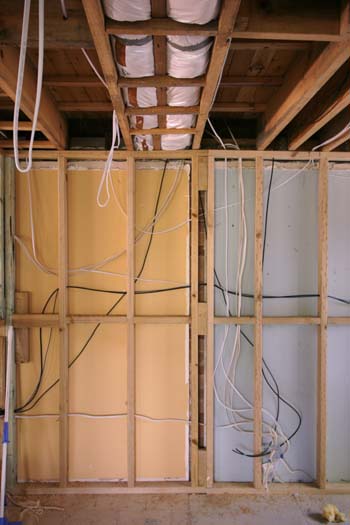The Ultimate Guide to Electrical Setup: Tips and Methods for a Safe and Effective Home Electrical Wiring System
In the realm of home maintenance, few aspects are as essential yet typically ignored as the electric wiring system. By exploring the nuances of electrical safety and security measures and energy-saving techniques, this thorough overview will certainly drop light on the complexities of home wiring, empowering individuals to take cost of their family's electric facilities.
Comprehending Electrical Safety And Security Actions
To make certain the safety and security of both people and building, understanding and carrying out appropriate electrical precaution is critical in any home wiring task. Electrical energy is a powerful force that can be unsafe otherwise handled with care. Among the essential precaution is making certain that all electrical work is carried out by certified experts who adhere to local building regulations and policies. It is essential to perform a complete evaluation of the electrical system prior to beginning any type of wiring job to recognize potential threats or issues that require to be attended to.
Additionally, making use of the appropriate tools and devices is crucial for maintaining security throughout electric installations. Insulated gloves, voltage testers, and protective eyeglasses are several of the standard safety and security gear that should be worn to stop electric shocks or crashes. It is additionally vital to de-energize circuits prior to servicing them and to label all circuits and breakers clearly to avoid confusion.

Vital Tools for Home Circuitry
Guaranteeing the appropriate execution of electric safety and security measures in home wiring jobs includes using a details collection of essential tools developed to help with the setup procedure successfully and securely. Some of the secret devices needed for home electrical wiring jobs consist of a voltage tester for inspecting online cables, cable strippers for eliminating insulation from cables, a cable cutter for exactly cutting cables to length, a screwdriver set for securing electrical parts, electric tape for insulation and safeguarding links, a cable television ripper for stripping cable television sheathing, and a multimeter for measuring voltage, current, and resistance.
Step-by-Step Electric Installment Overview
Starting an electrical installment task needs precise planning and adherence to safety standards. Prior to beginning any job, guarantee you have an in-depth plan describing the layout of the electric system, consisting of the placement of electrical outlets, buttons, and fixtures. Think about the power needs of each gadget to determine the ideal cord gauge and breaker dimensions.
The primary step in the setup process is to close off the power supply to the area where you will certainly be functioning. Use a voltage tester to validate that the circuits are de-energized before touching any cords. Next, meticulously eliminate existing fixtures or electrical outlets and disconnect the cords.
When setting up brand-new wiring, run cords through walls and ceilings, safeguarding them in position with proper fittings. Comply with neighborhood building regulations and producer guidelines for proper cable installment and links. BRE Automation Australia. Make certain to label cables for simple recognition and future upkeep

Troubleshooting Common Circuitry Issues
Having actually completed the installation process as detailed in the previous subtopic, troubleshooting typical wiring problems is a necessary ability for making sure the security and functionality of your electric system. One typical problem is a tripped breaker, commonly triggered by overloaded circuits or a brief circuit. To troubleshoot this, situate the breaker panel, determine the tripped breaker by looking for the one not totally in the "on" setting, and reset it by flipping it totally click for more info to "off" and afterwards back to "on." Another widespread problem is a faulty electrical outlet, characterized by no power or recurring power supply. Make sure the outlet is not regulated by a switch, after that utilize a voltage tester to examine for power. If there is no power, shut off the circuit, inspect the electrical wiring connections for any type of loose or broken cords, and replace the electrical outlet if required. Continually flickering lights can suggest loosened wiring links or an overloaded circuit. To address this, check and tighten up all cord connections in the influenced fixtures and buttons and redistribute the tons on the circuit to stabilize the electrical demand. Routinely evaluating and quickly resolving these common circuitry issues will keep the safety and effectiveness of your home electric system.
Tips for Energy-saving Electric Solutions
For ideal power efficiency in electric systems, implementing wise go techniques and using energy-saving modern technologies is critical. One vital tip for attaining an energy-efficient electrical system is to upgrade to LED illumination. Appropriate insulation and securing of home windows, doors, and electric outlets can additionally prevent energy loss, inevitably decreasing the workload on electric systems.
Conclusion
Finally, executing correct precaution, making use of important devices, adhering to a detailed installation guide, fixing usual concerns, and incorporating energy-efficient suggestions are vital for a secure and efficient home electrical wiring go to this website system. By sticking to these practices, homeowners can guarantee the durability and performance of their electric installments. It is vital to prioritize safety and efficiency when it concerns electrical work in order to avoid prospective dangers and to preserve a trusted electric system in the home.